in a hot-air balloon. They call the Nzaland the Valley Of The Elephants, but I had come
to find a much smaller and more rare creature, the aardwolf.
I got off to an amazing start in spotting an African lion cub, which I didn't hang around
too long because I could see mom was close by and not exactly thrilled to see us.
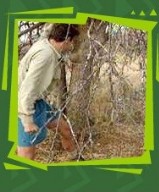
I decided to trek another cat; this time it was an adult African Leopard. The leopard
stalks it's prey in the grass. It seemed to think I was a good target for it, but I stood
my ground. Since the leopard saw I wasn't backing down, it walked away.
This was one of my most challenging encounters. It was important, even as the leopard was
coming toward me, that I not show fear. If it sees you as something weak, you're a goner.
Good thing I knew when to take charge. Fortunately, the leopard walked off, but I don't
encourage you to try this yourself.
My close encounter with the leopard left me looking around for some first aid -- just in
case. The flesh of the false marva tree acts as an antibiotic. If you are bleeding, cut
open a root -- it makes a great coagulant that will stop the bleeding.

On to a much less aggressive animal -- the savanna or land monitor. These animals actually
defend themselves by "playing possum" or pretending to be dead. You might say they have
the best defense.
Besides being an excellent place to find an aardwolf, the Nzaland has amazing views of the
African savanna, or grasslands, that is home to elephants, gazelles and lions.
Scientists have used land monitors to learn about snakes. The land monitor has the same
skeleton as a snake, including an elastic jaw that lets it swallow large prey. Land
monitors also have forked tongues like snakes that allow them to sense and taste their way
through their environment.
Our journey took us right into a pack of lions. In the lion pride, it is the lioness,
or the female lion, who does 90 percent of the hunting and care for the young.
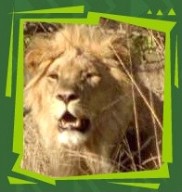
A male lion heads the pride. He spends nearly all his time and energy protecting the pack
from other lions. If a male lion looks weak or injured, another male lion will come in to
battle him. If the head of the pride loses the battle, he not only is kicked out of the
pride but also loses his children to the victorious lion.
The lions were really amazing to see. One even jumped up on me and nuzzled my head.
Fortunately I was able to push him off. Remember to respect these magnificent creatures
from afar!
After seeing such a powerful and aggressive animal pack, I picked up an animal whose best
defense is curling itself into a ball -- the African hedgehog.
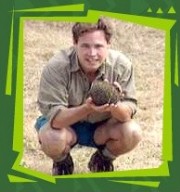
Hedgehogs are covered with prickly spikes that sting, and hence they have very few natural
predators. Related to shrews and moles, hedgehogs are insectivores.
Although hedgehogs and porcupines look alike, there is a big difference in their quills --
those pointy spikes sticking out of their backs. I could never have picked up a porcupine
because their quills are a lot longer and hurt a lot more!
The grasslands are full of big, wonderful creatures on and off land. One example is the
hippopotamus. It was given this name, which means "river horse," because it spends so much
time in the river.
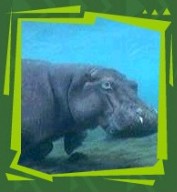
Hippos sink to the bottom of water beds, trotting along the bottom. Incredible, considering
the large male can weigh in at over 7,000 pounds! Don't be fooled by hippos' mellow
appearance -- they are the leading cause of deaths for tourists. Hippos are extremely
territorial. When you see them open their mouths they are warning you, not yawning, so
hit the road!
This was the first time I've seen a hippo let out fecal spray to warn me off. These
animals are really strong. They can snap a crocodile in half!
The African savanna has certainly made for an eventful trek. Fortunately, the sun is
starting to go down, which makes it the perfect time to search for our feature creature,
the aardwolf.
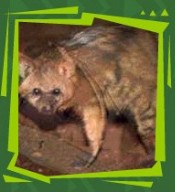
These creatures are very rare and extremely reclusive, which is why they are only active
under the blanket of night. I spotted an aardwolf, but it was skittish and ran right back
into the cover of it's dwelling. Although aardwolves look like foxes, they are not
relatives of canines but relatives of hyenas. Due to the competition of jackals and lions
for sources of protein, aardwolves are designed for an alternative source -- termites.
It took us two weeks to track down an aardwolf. They are so rare and reclusive it was
just thrilling to catch up with one. A hyena eating termites -- who would have ever
thought?
Well it's been quite an adventure, but it's time to leave this aardwolf alone to go out
and get dinner. Stay curious!
Your Friend,
Jeff
Back to Jeff's Journals